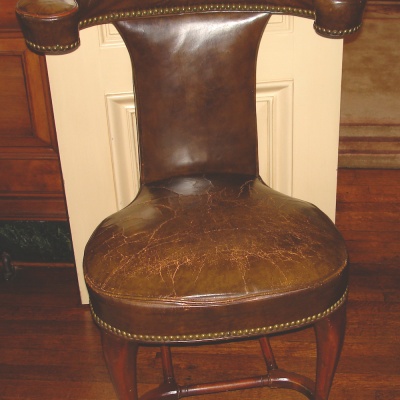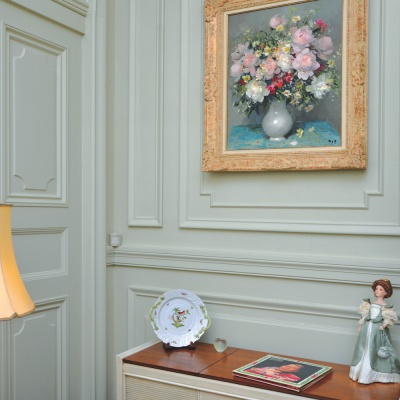Collection Corner: Style and Splendor
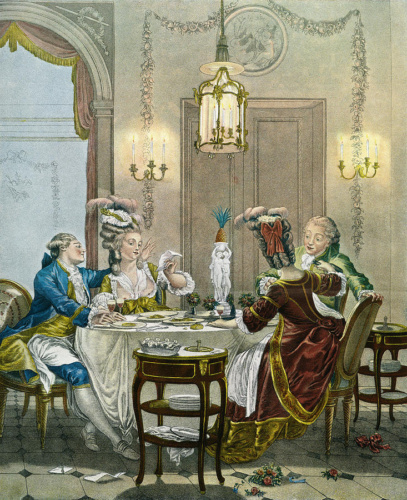
“Wine Coolers and Cellarettes: Style and Splendor in Utilitarian Furniture” is the title of an article about the interesting pieces that can be found on World Collectors Net and it provides the perfect description of the cellarette. Also called a wine cooler, these beautifully crafted pieces of furniture were used to keep wine cool after being taken from the wine cellar until it was served. Often the inside of a cellarette would be lined with metal, which served to keep the chill for a longer period. The French word for these pieces is “rafraichissoir,” derived from the French word “rafraichir,” which means to refresh or cool. What better way to refresh than having a chilled glass of champagne from your rafraichissoir.
In English, the word cellarette, also spelled cellaret, is a compact moveable cabinet designed to hold a small supply of wine or liquor. It was primarily used from the 18th to the 20th centuries, but first appeared in Europe in the 1500s to hold and secure alcoholic beverages in public houses. Early cellarettes were kept under the center of a sideboard, or side table, and rolled out to be used. If the object was meant to hold ice and made of silver, it was, and still is, known as a wine cooler.
There are many periods of this particular piece of utilitarian furniture: Georgian, Regency, Sheraton, Dutch Colonial, American Federal, and Empire. These different periods offered style variations made of many types of carved, inlaid, and plain woods–mahogany (the most popular), oak, walnut, and fruit woods, and in various shapes: hexagon, square, round, tambour, or sarcophagus (coffin shape). For added decoration to these pieces, some were fitted with copper banding, bronze feet, or silver handles.
High-ranking officers used cellarettes in the American and French Revolutionary Wars, and the Civil War. History notes George Washington having the luxury of a cellarette taken along when maneuvering to cross the Delaware. His was described as a box or trunk with paper lining, side handles, and lock and key. The inside of this cellarette was fitted with small, glass bottles with stoppers to hold the wine, a lift-out tray, a glass funnel, and 4 wine glasses. Soldier life was hard and a bit of civility surely helped to keep “spirits” up!
Speaking of spirits of the liquid variety, Prohibition in the United States brought about variations designed to conceal the real thing by the addition of trompe l’oeil decorations. To the casual observer, the three dimensional trompe l’oeil artwork on these pieces made it appear to be an ordinary piece of furniture, for example, table or bookcase.
There are three such utilitarian objects in the home at Hills & Dales, which are, nonetheless, objects of style and splendor. Though originally designed for keeping wine cool, they are now appreciated for their beauty, practicality, and newer functionality:
The Music Room Table
The sofa table is actually an 1800s French cellarette, and when giving a tour, I always anticipate someone asking about its purpose. “Was it for plants?” is the most common query. This table/cellarette is petite, 18” wide x 17” deep x 28” high.
The tabletop consists of a marble section and a wooden section with two, side-by-side, open metal wells flush with the tabletop and extending below the table surface. A small, lower drawer is where a cheese knife and wine opener would be kept, then two lower shelves for plates and napkins, completing the table’s function for an intimate tête-à-tête.
The visitors’ guess that the table is a plant holder is also correct, as Alice kept African violets in the two metal wells, evidenced by the remaining pebbles in the bottom of each. But in the 1800’s, their function would have been to keep bottles of wine chilled. Now it seems that the little table was a perfect furniture choice, not only by adding to the Music Room’s French influence, but also as a lamp table and a charming holder for Alice’s violets.
The Stairway Landing Planter
This handsome planter is actually a cellarette, newly discovered as such when researching material for this article, and now has the proper name in our inventory system. The cleverly disguised cellarette also has all the components needed for its current use: a metal liner to hold water drainage from a plant, and its four legs add height so potted beauties can get the benefit of light from the Palladian window above.
The Living Room Cellarette
This fine, flame mahogany, metal-lined, two-piece Georgian cellarette would hold three or four bottles of wine, kept cool until served; but at Hills & Dales Estate it served another purpose – a trash receptacle, clever and perfect! There is little notice of this interesting object sitting on the floor next to the French desk until I call attention to it, ask the purpose, and then open the lid to reveal the metal liner. At that point, I hear the answer: “it’s a cooler of some sort!” “But what would be so special to be cooled in such a special object?” I ask. “Think special occasion, toasts and bubbles!”
All three of the above items were added to the home in 1948, the year of major decorative changes by Sarah King Small, the Atlanta decorator for Alice and Fuller. Sarah really knew her business, plus a thing or two (or three) about the uses of a cellarette. With time, changes are driven by fashion, technology, and necessity. Once the original functionality of an object is no longer needed, because of these changes, some things can be repurposed or simply enjoyed for its beauty. Hopefully, there will always be those who appreciate these fine pieces, whether they use them as they were originally intended or not. ~ SD
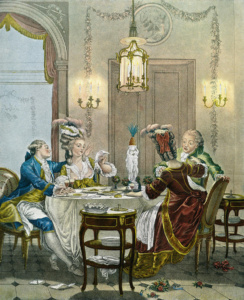
“Le souper fin (the gallant dinner,” engraving, after J. M. Moreau (1741-1814), France. |
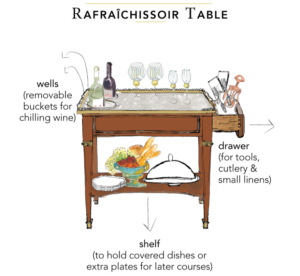
Diagram showing the intended functions for the components of a cellarette. |
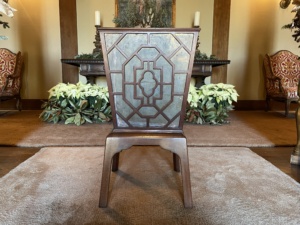
Although the stairway landing cellarette is easy to miss as you climb the grand staircase to the second floor, its beautifully intricate design makes it stand out from the other cellarettes in the home. |
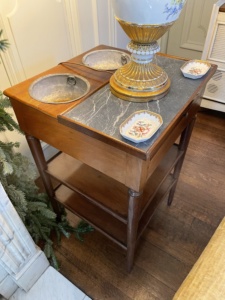
The cellarette on display in the Music Room. |
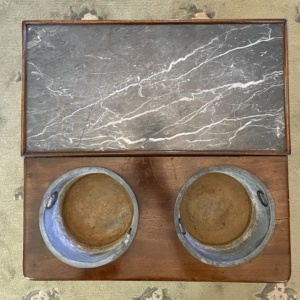
Top view of the cellarette on display in the Music Room. |
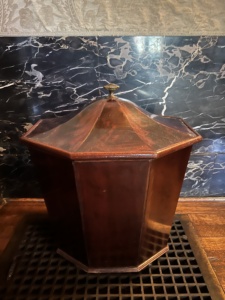
The living room cellarette, used by Alice as a trashcan. |
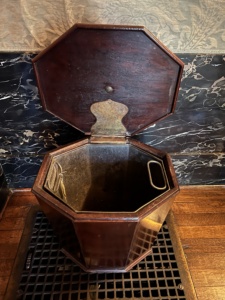
The living room cellarette, used by Alice as a trashcan. |
